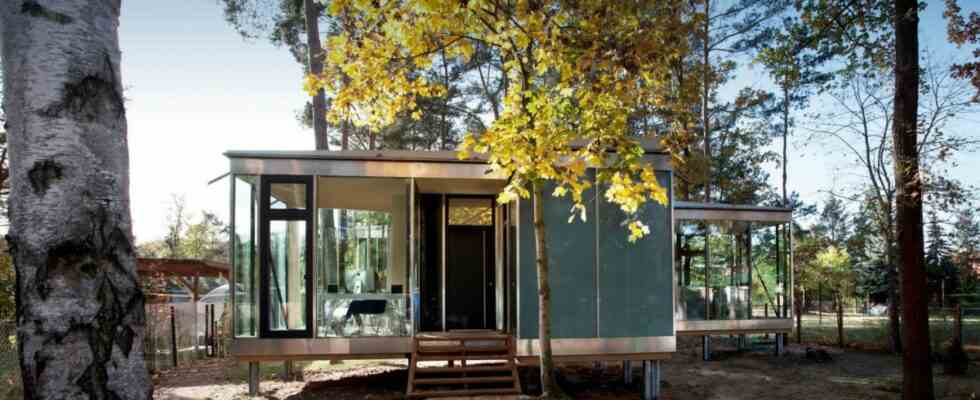Peter Grundmann is hard to imagine as a psychopath setting death traps in the woods. The architect from Berlin assures us on the phone that “according to information” from the builders “not a single bird died on the glass panes of the house”. The discs have been around for three years. They belong to a single-family house that has now been occupied. It’s in the forest. Nearly.
It is the number zero that counts in this dispute, which in its bizarreness is emblematic of disputes that construction triggers today much more than ever before. It often gets emotional. So Peter Grundmann has designed a spectacular and at the same time spectacularly reserved house for friends not far from Lake Mellensee in Brandenburg, which was recently awarded the “House of the Year” prize by Callwey Verlag. Now a glass house winds its way around trees on an idyllic plot of land measuring a good two thousand square meters with 70 large deciduous and coniferous trees (none of which had to give way to the new building). At 142 square meters, it offers space – and a certainly fantastic view of the countryside – for two people.
If it weren’t for the expressive, meandering floor plan that respectfully plays Tetris with the many trees that give the residents the feeling of living in the middle of the forest: you would be standing in front of Mies van der Rohe’s “Farnsworth House”, legendary in architectural history. Albeit in an East German “organic” variant. And if it weren’t for the biologist Heiko Haupt. According to his study of Bonn’s “Post-Tower” and its hazard potential for the bird world, he is a person to be taken seriously and is probably just as little a nature nut as Grundmann is a nature hater. Yet they just crashed together, escaping all impact protection.
After all, no tree has ever fallen victim to the house
The biologist has alerted the nature conservation authority. In order to “ensure that the building is retrofitted as bird-proof as possible”. Haupt believes that the house’s “supposed closeness to nature” is actually a “deadly bird trap”. In fact, one can ask the publisher and the jury whether the “House of the Year” really expresses its closeness to nature by being in the middle of such nature – as a rather privileged single-family house for two people. On the other hand, the large property is a building plot and not a nature reserve. The building, which seems almost temporary, manages with little material, tries to be energy efficient (to a certain extent, but that’s rather relative with so much glass), but above all: Not a tree fell victim to the house. And not a single bird.
Perhaps the biologist should have called the architect to make sure that his legitimate concern in this case didn’t come across as meaningless pomposity. To see the horror of a deadly “bird trap” where not a bird has been “trapped” for three years is startling research for a researcher. Conservation and hysteria should be kept apart as much as possible. For the sake of nature. The climate adhesives are also experiencing this.

